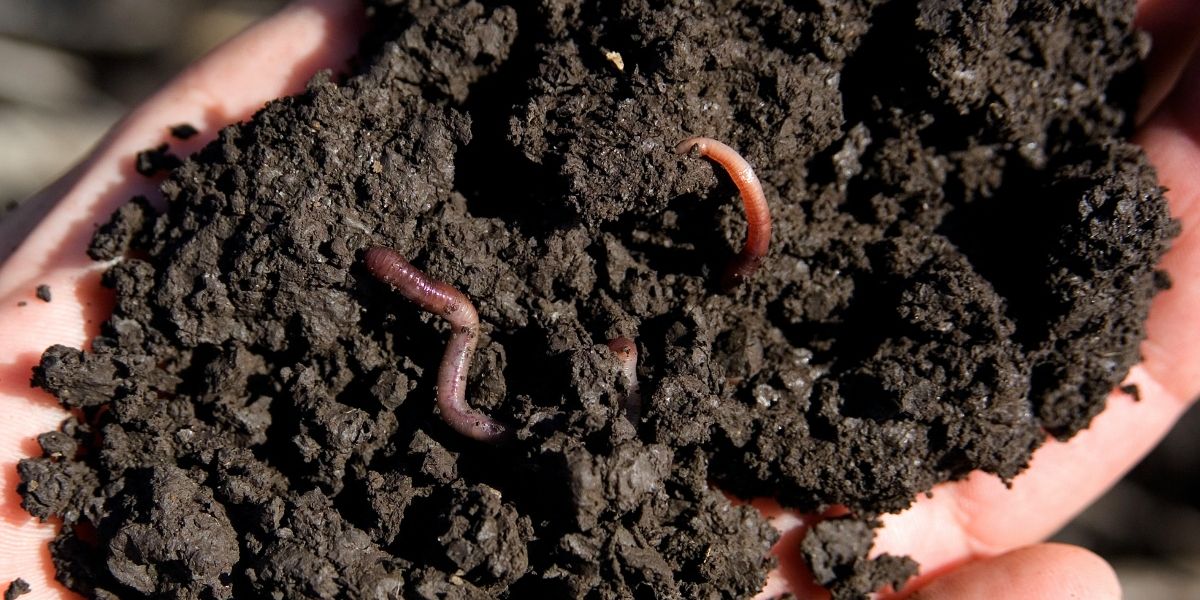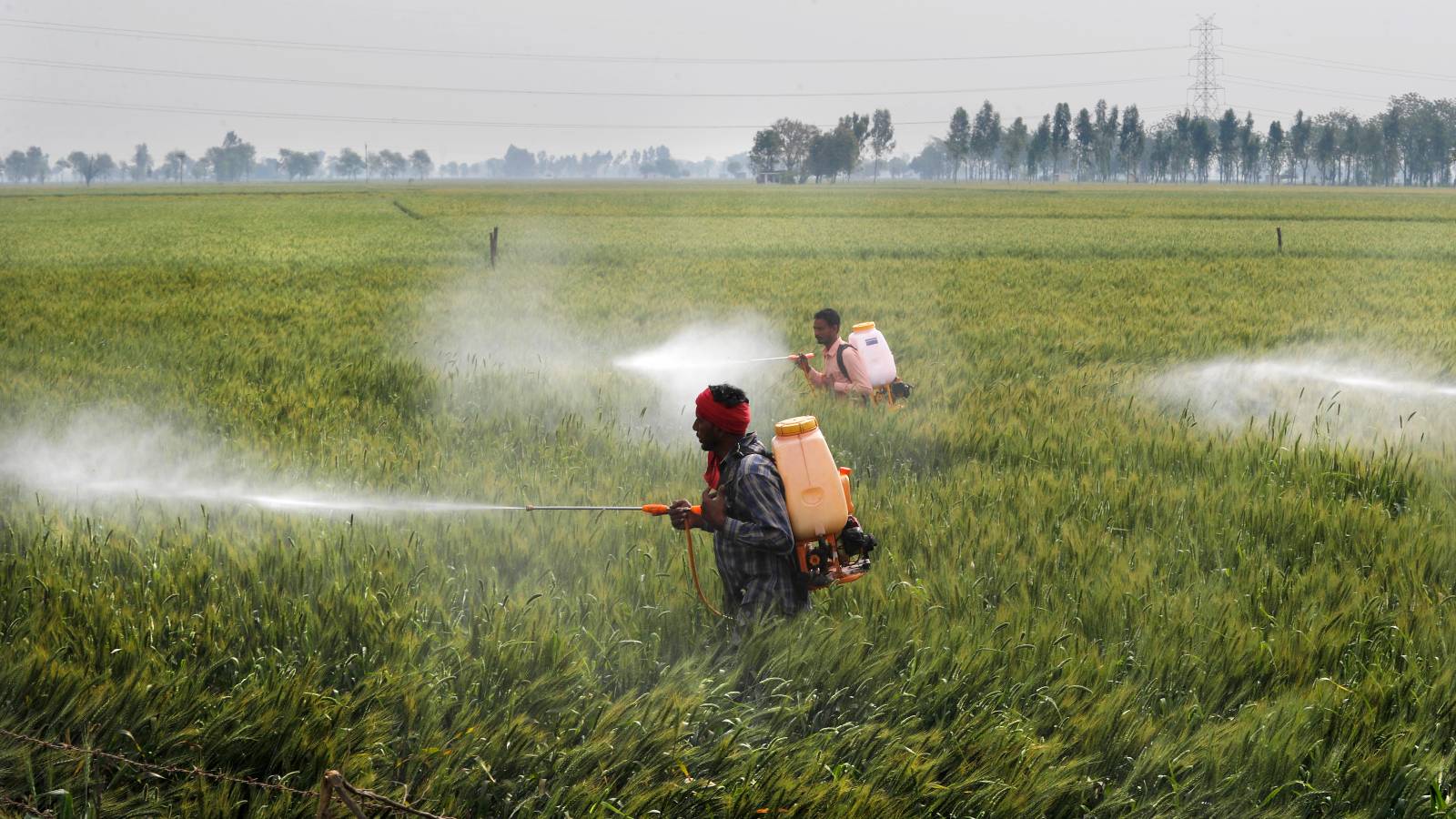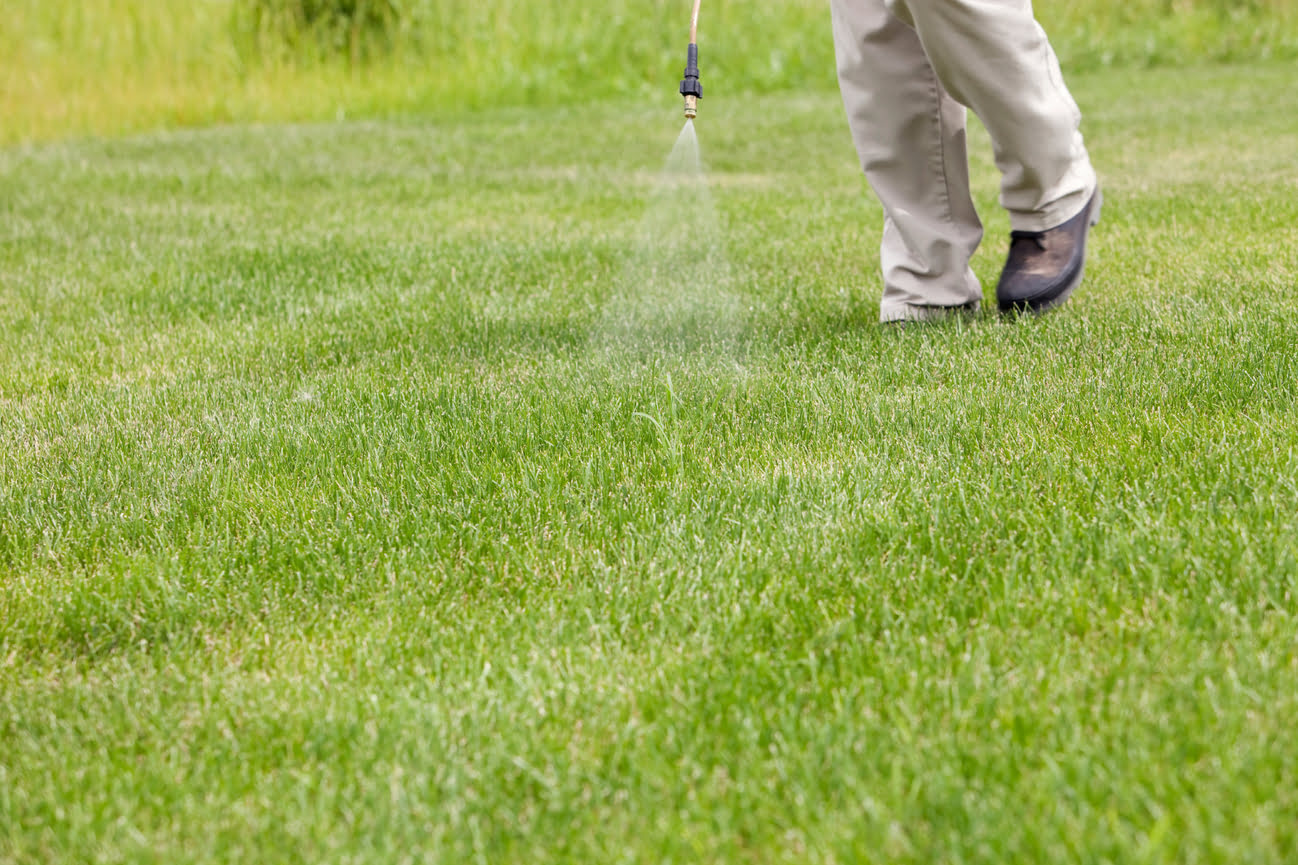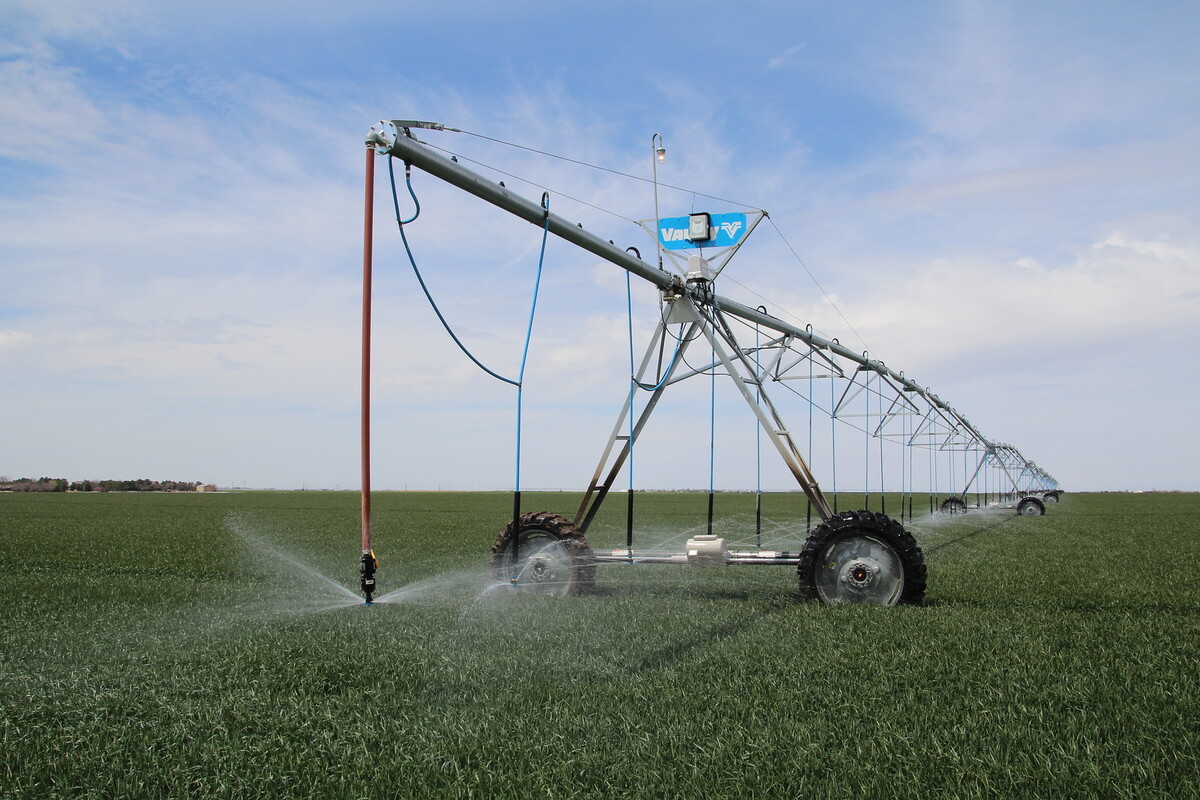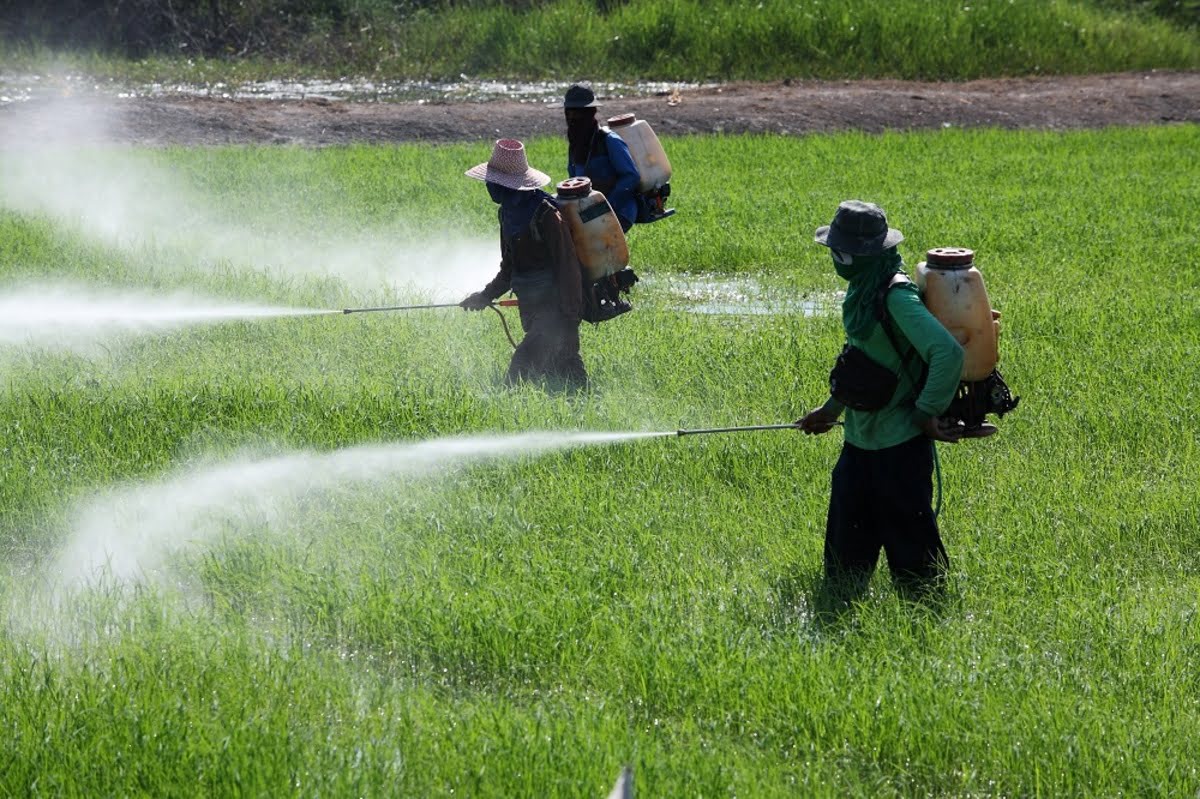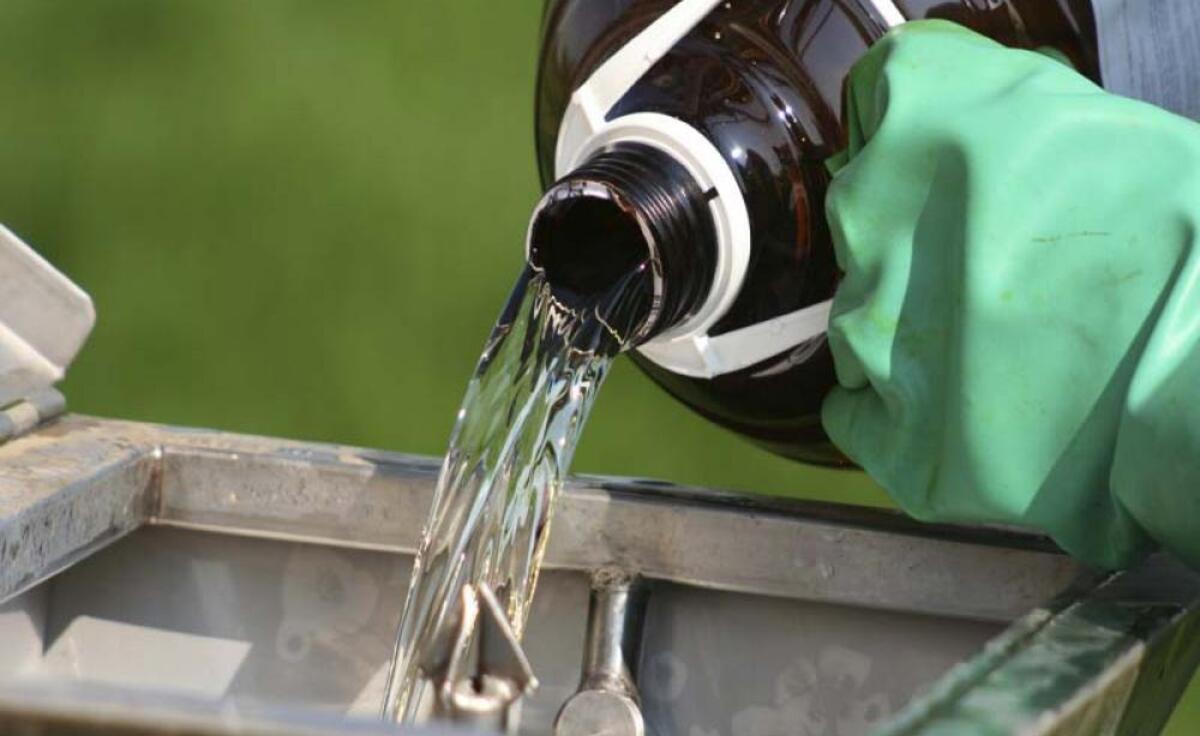Home>Gardening News and Trends>Latest News>How Do Pesticides Affect Bees
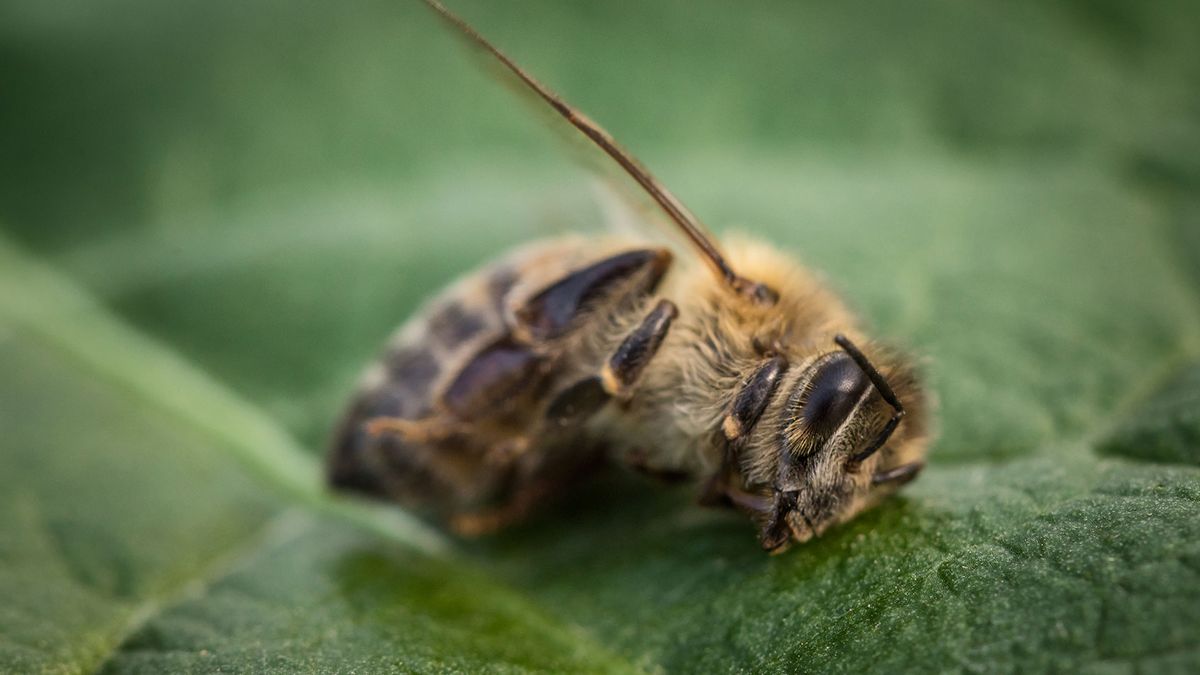

Latest News
How Do Pesticides Affect Bees
Modified: January 22, 2024
Discover the Latest News on How Pesticides Impact Bees and Their Precarious Survival. Stay Updated on the Dangers and Efforts to Protect These Vital Pollinators.
(Many of the links in this article redirect to a specific reviewed product. Your purchase of these products through affiliate links helps to generate commission for Chicagolandgardening.com, at no extra cost. Learn more)
Table of Contents
Introduction
Pesticides, a key component of modern agriculture, play a vital role in protecting crops from pests and ensuring food security. However, the widespread and indiscriminate use of pesticides has raised concerns about their impact on the environment and non-target organisms. One particular group of organisms that are significantly affected by pesticides are bees, which are essential pollinators for a wide variety of crops and wild plants.
Bees are crucial to maintaining biodiversity and supporting ecosystem services such as pollination, which directly or indirectly contributes to around 35% of global food production. However, the use of pesticides, specifically insecticides, can have detrimental effects on bee populations and their overall health. Understanding the relationship between pesticides and bees is essential to ensure the conservation of these vital pollinators.
In this article, we will explore the effects of pesticides on bees, including the impact on colony health, changes in foraging behavior, reproductive challenges, and sublethal effects. We will also discuss potential mitigation strategies to minimize the risks posed by pesticides to bees.
It is crucial to strike a balance between the use of pesticides for effective pest management and the protection of bee populations. By examining the effects of pesticides on bees and implementing appropriate measures, we can safeguard the survival of these remarkable creatures while maintaining sustainable agricultural practices.
Understanding Pesticides
Pesticides are chemical substances used to control or eliminate pests, including insects, weeds, and diseases that can negatively impact crop yields. They are an integral part of modern agriculture, helping to protect crops and ensure food production. Pesticides come in various forms, including insecticides, herbicides, and fungicides, each designed to target specific types of pests.
These chemical compounds work through different mechanisms to eliminate or repel pests. Insecticides, for example, target and disrupt the nervous system of insects, leading to paralysis or death. Herbicides, on the other hand, interfere with weed growth by inhibiting essential biochemical processes. Fungicides are used to control fungal diseases that can damage crops.
Pesticides can be applied using various methods, including spraying, dusting, or seed treatment. They are often used in large-scale agricultural practices to protect crops from pest infestations that could significantly impact yield and quality.
However, it’s essential to note that while pesticides serve an important purpose in pest management, they also have the potential to cause harm to non-target organisms, including bees. This is due to their widespread use and the systemic nature of some pesticides, which can affect not only the intended pests but also other organisms within the ecosystem.
Understanding the different types of pesticides, their mode of action, and the potential risks associated with their use is critical in addressing the impact they can have on bees and other beneficial organisms.
Pesticides can persist in the environment for varying durations, depending on their chemical properties and the conditions in which they are used. Some pesticides break down quickly, while others can persist in soils, water sources, and plant tissues for extended periods. These residual effects can expose bees to pesticides even when they are not directly applied to flowering plants.
It is important to note that pesticide use is regulated in many countries to ensure safety and minimize environmental harm. Regulatory bodies set maximum residue limits and establish guidelines for pesticide use to protect human health and the environment. These regulations aim to strike a balance between effective pest management and minimizing the risks posed to non-target organisms like bees.
The Importance of Bees
Bees are often celebrated for their production of honey, but their role in ecosystems goes far beyond that. As pollinators, bees play a critical role in the reproduction of flowering plants, making them essential for maintaining biodiversity and supporting the global food system.
Bees are responsible for pollinating a wide array of crops, including fruits, vegetables, nuts, and oilseeds. In fact, it’s estimated that bees directly or indirectly contribute to the pollination of around 35% of global food production. Without bees, many of the foods we rely on for sustenance and enjoyment would be in jeopardy.
Not only do bees contribute to crop pollination, but they also support the growth of wild plants. Many flowering plants in natural ecosystems rely on bees as their primary pollinators, ensuring the transfer of pollen and the production of seeds. This is key to maintaining healthy ecosystems, as these plants provide food and habitat for a diverse range of organisms.
Furthermore, the pollination services provided by bees have significant economic value. The global economic worth of pollination services by bees has been estimated to be billions of dollars each year. This value encompasses not only the directly pollinated crops but also the indirect benefits that arise from improved crop yield and quality.
In addition to their role as pollinators, bees also contribute to the wider ecosystem. They serve as food sources for many other animals, including birds and mammals, and help in the decomposition of organic matter. Their presence and activities contribute to the overall balance and functioning of ecosystems.
Unfortunately, bee populations worldwide have been under threat in recent decades. Multiple factors, including habitat loss, climate change, pests, diseases, and pesticide exposure, have led to declines in bee populations. This decline in bee populations is a cause for concern, as it has far-reaching implications for both the environment and food security.
Recognizing the importance of bees and taking steps to protect their populations is crucial for maintaining the health and balance of ecosystems and ensuring a sustainable future for agriculture and food production.
Effects of Pesticides on Bees
The use of pesticides, particularly insecticides, can have significant impacts on bee populations and their overall health. Bees can be exposed to pesticides through different pathways, including direct contact with treated plants, ingestion of contaminated pollen and nectar, and exposure to residues in their nesting sites.
1. Impact on Colony Health: Pesticides can weaken bee colonies, making them more susceptible to diseases and pests. The exposure to certain pesticide classes, such as neonicotinoids, has been linked to a higher risk of colony collapse disorder – a phenomenon where the majority of worker bees abandon the hive, leading to the collapse of the colony.
2. Altered Foraging Behavior: Bees exposed to pesticides may exhibit changes in their foraging behavior. They may have difficulty navigating back to their hive, resulting in loss of foragers and reduced efficiency in pollen and nectar collection. This can disrupt the normal functioning of the colony and impact its overall productivity.
3. Reproductive Challenges: Pesticide exposure can affect the reproductive capacity of bees. Queen bees exposed to certain pesticides may lay fewer eggs, resulting in reduced colony growth and population size. Additionally, pesticide residues in the environment can impact the development of immature bees, leading to abnormalities and reduced survival rates.
4. Sublethal Effects: Bees exposed to sublethal doses of pesticides may experience various physiological and behavioral impacts. These can include impaired learning and memory, compromised immune function, and altered grooming and communication behaviors. Sublethal effects can have long-term consequences on individual bees and the overall strength and resilience of bee populations.
5. Effects on Brood Development: Pesticide exposure during brood development can have detrimental effects on the health and development of young bees. Studies have shown that exposure to certain pesticides can lead to delayed development, reduced pupal weight, and increased mortality in both male and female bees.
The specific effects of pesticides on bees can vary depending on factors such as the type of pesticide, its concentration, exposure duration, and the timing of exposure in relation to bee life stages and foraging activities. Additionally, interactions between different pesticides or other stressors can amplify the negative impacts on bee populations.
Understanding the effects of pesticides on bees is essential for developing strategies and practices that minimize the risks to these valuable pollinators. By implementing appropriate mitigation measures and promoting sustainable pest management practices, we can strive to protect bee populations and ensure the continued provision of essential pollination services.
Impact on Colony Health
Pesticide exposure can have significant impacts on the health and vitality of bee colonies. Bees within a colony work together in a highly organized and coordinated manner, with each member fulfilling specific roles to ensure the survival and productivity of the colony as a whole. However, the effects of pesticides can disrupt the delicate balance within the colony and have far-reaching consequences.
One of the most concerning effects of pesticide exposure on colony health is the increased vulnerability to diseases and pests. Pesticides can weaken the immune system of bees, making them more susceptible to infections and infestations. This can lead to a higher incidence of diseases such as Nosema, a fungal gut infection, and Varroa mites, a destructive parasite that feeds on bees and their brood.
Furthermore, certain insecticides, such as neonicotinoids, have been linked to colony collapse disorder (CCD), a phenomenon where the majority of worker bees abandon the hive, leaving the queen and a few individuals behind. CCD can result in the eventual collapse of the entire colony. Pesticide exposure is considered one of the contributing factors to the occurrence of CCD, along with other stressors such as poor nutrition, habitat loss, and climate change.
Pesticides can also lead to a reduction in the overall population size of a colony. Queen bees exposed to certain pesticides may produce fewer eggs, limiting the growth and development of the colony. The loss of reproductive potential can lead to a decline in the number of worker bees and a decreased ability to perform essential tasks such as foraging, nursing brood, and defending the hive.
In addition to direct effects on individual bees, the use of pesticides can impact the social structure of the colony. Bees within a colony communicate through chemical signals and behavioral interactions, forming a tightly-knit social network. Exposure to pesticides can disrupt these communication pathways, leading to a breakdown in coordination and cooperation among colony members. This can result in reduced foraging efficiency, decreased food storage capacity, and overall compromised colony functioning.
The impact of pesticides on colony health is not limited to immediate effects but can also have long-term consequences. Pesticide exposure can leave residual effects in the hive, compromising its suitability as a nesting and breeding environment. These residues can persist for extended periods, potentially affecting subsequent generations of bees and increasing the overall vulnerability of the colony.
Protecting the health and well-being of bee colonies requires a holistic approach that considers the impacts of pesticide use alongside other factors such as habitat preservation, disease management, and sustainable agricultural practices. By reducing pesticide exposure and promoting alternative methods of pest control, we can help safeguard the resilience and survival of bee colonies, ensuring their continued contributions to pollination and ecosystem stability.
Altered Foraging Behavior
Pesticide exposure can have a significant impact on the foraging behavior of bees, disrupting their ability to navigate and collect resources efficiently. Foraging is a critical activity for bees, as it involves the collection of pollen and nectar, which provide essential nutrients for the colony and support the reproductive success of individual bees.
One of the key effects of pesticide exposure on foraging behavior is impaired navigation. Bees rely on visual cues, landmarks, and odor trails to navigate between their hive and foraging sites. However, exposure to certain pesticides can interfere with their ability to recognize and remember these cues, leading to confusion and disorientation. This can result in bees becoming lost and failing to return to the hive, negatively impacting the foraging efficiency of the colony.
Pesticides can also affect the homing ability of bees. Bees are remarkable at navigating over long distances and accurately finding their way back to the hive. However, exposure to pesticides can disrupt their homing instincts, making it more challenging for them to locate and return to the hive. This can lead to increased energy expenditure and reduced foraging efficiency for individual bees.
Another consequence of pesticide exposure is a decrease in overall foraging activity. Bees may exhibit reduced interest or motivation to forage, resulting in fewer trips and less pollen and nectar collection. This can have cascading effects on the colony, leading to decreased food stores, compromised brood development, and a decline in overall population size.
Pesticides can also impact the quality and availability of food sources for bees. In some cases, pesticides can contaminate pollen and nectar, making them less nutritious or even toxic to bees. This can lead to negative health effects, reduced fitness, and impaired reproductive success. Additionally, the use of pesticides on crop plants can reduce the availability of diverse floral resources for bees, limiting the range of foraging options and potentially leading to nutritional deficiencies.
It is important to note that the effects of pesticide exposure on foraging behavior can be both acute and chronic. Acute effects may occur immediately after exposure, while chronic effects can manifest over time as bees continue to encounter pesticide residues in the environment.
Understanding the impact of pesticides on the foraging behavior of bees is crucial for developing strategies that promote their safe and effective movement between the hive and foraging sites. Minimizing pesticide use, implementing targeted application techniques, and creating bee-friendly habitats with diverse and pesticide-free forage options are all important steps in maintaining healthy bee populations and supporting their crucial role as pollinators.
Reproductive Challenges
Pesticide exposure can have detrimental effects on the reproductive capacity of bees, disrupting various aspects of their reproductive biology. Bees, including queen bees, are responsible for ensuring the growth and sustainability of their colonies through successful reproduction. However, pesticide exposure can disrupt this delicate process, leading to reproductive challenges and decreased colony viability.
One of the key reproductive challenges associated with pesticide exposure is a decrease in the egg-laying ability of queen bees. Pesticides, especially those belonging to the class of neonicotinoids, have been shown to negatively impact the reproductive health of queen bees. Exposure to these pesticides can result in reduced egg-laying rates, leading to lower colony population growth and potentially limiting the replenishment of worker bees.
In addition to the quantity of eggs, the quality of eggs can also be affected by pesticide exposure. Pesticides can cause abnormalities in developing eggs, leading to deformities or developmental delays in emerging bees. This can reduce the overall fitness of the colony and increase the risk of colony failure.
Pesticide exposure during the crucial developmental stages of young bees, such as larvae and pupae, can also have long-lasting effects on their reproductive capacity. Pesticides can impact the growth and development of these bees, leading to reduced weight, delayed emergence, and increased mortality. This can result in a lower number of sexually mature individuals within the colony, hindering the production of new queens and overall reproductive success.
Furthermore, pesticide exposure can interfere with the mating behavior of drones, which are the male bees responsible for mating with queen bees from other colonies. Successful mating is crucial for genetic diversity within bee populations and colony resilience. Pesticide exposure can disrupt the mating behavior and fertility of drones, reducing the chances of successful mating and potentially impacting the genetic variability of bee populations.
It is important to note that these reproductive challenges can have cascading effects on the overall health and productivity of the colony. A decline in the reproductive capacity of queen bees can hinder colony growth, limit the availability of worker bees for essential tasks, and make the colony more vulnerable to environmental stressors and diseases.
Protecting the reproductive health of bees requires implementing strategies that minimize pesticide exposure and promote sustainable agricultural practices. This includes using alternative pest control methods, creating pesticide-free zones, and promoting habitat restoration and conservation to provide bees with suitable nesting and foraging environments. By prioritizing the reproductive success of bees, we can ensure the sustainability and resilience of their populations in the face of agricultural intensification and other threats.
Sublethal Effects
While pesticide exposure may not always lead to immediate bee mortality, sublethal effects can have significant impacts on the health and behavior of bees. Sublethal effects refer to those that are not immediately lethal but can still impair various physiological and behavioral functions, ultimately affecting the overall well-being and productivity of bee populations.
One of the sublethal effects of pesticide exposure is impaired learning and memory. Bees rely on learning and memory to navigate their environment, communicate with nestmates, and locate food sources. Exposure to certain pesticides, such as neonicotinoids, has been found to interfere with these cognitive abilities. Bees exposed to these pesticides may struggle to learn and associate specific floral scents or colors with food rewards, hindering their foraging efficiency and potentially leading to reduced colony productivity.
Pesticides can also affect the immune system of bees, weakening their ability to fend off diseases and infections. Bees exposed to sublethal doses of pesticides may have compromised immune function, making them more susceptible to pathogens and parasites. This can increase their vulnerability to diseases, leading to higher rates of mortality within the colony.
Behavioral changes are another sublethal effect of pesticide exposure in bees. Pesticides can disrupt normal social interactions within the colony, affecting communication, grooming, and nestmate recognition. These disruptions can disrupt the division of labor within the colony, leading to reduced efficiency in foraging, nursing brood, and defending against predators.
Additionally, exposure to certain pesticides can alter grooming behaviors in bees. Bees groom themselves and each other to maintain hygiene and remove parasites. Pesticides can interfere with this essential behavior, leaving bees more vulnerable to parasites and decreasing their overall health and vitality.
Sublethal effects of pesticides can also impact the lifespan and reproductive success of individual bees. Pesticide exposure has been shown to reduce the lifespan of worker bees, limiting their contribution to the colony and potentially affecting colony sustainability. In some cases, exposure to certain pesticides can lead to decreased sperm viability in male bees, affecting their ability to reproduce and impacting the genetic diversity of bee populations.
It is important to note that the sublethal effects of pesticide exposure can occur even at low concentrations over extended periods. The cumulative impact of repeated exposure to sublethal doses of pesticides can have long-term consequences on individual bees and the overall strength and resilience of bee populations.
Minimizing the sublethal effects of pesticides on bees requires a comprehensive approach. Implementing integrated pest management strategies, promoting alternative pest control methods, and creating pesticide-free zones can all help reduce pesticide exposure and support the health and productivity of bee populations. By mitigating sublethal effects, we can contribute to the conservation and well-being of these vital pollinators.
Effects on Brood Development
Pesticide exposure can have significant implications for the development and health of brood in bee colonies. Brood refers to the immature life stages of bees, including eggs, larvae, and pupae. The exposure of brood to pesticides can lead to a range of effects that impact their growth, survival, and overall reproductive success.
One of the key effects of pesticide exposure on brood development is delayed growth and development. Pesticides can disrupt the hormonal and physiological processes necessary for the timely progression of brood from one stage to another. This delay in development can have cascading effects, leading to a longer time until the emergence of adult bees, reduced overall population size, and compromised colony productivity.
Pesticide exposure during brood development can also lead to reduced pupal weight. Pesticides can affect nutrient absorption and utilization, leading to decreased body mass in developing bees. This can impact their overall fitness and survival rates as lower weight individuals may be more vulnerable to environmental stressors and diseases.
Furthermore, exposure to certain pesticides can increase the mortality rate of brood. Pesticides can be toxic to the vulnerable and developing stages of bees, leading to higher levels of mortality in eggs, larvae, and pupae. This can result in significant losses in brood populations, weakening the overall strength and capacity of the colony.
In addition to direct mortality, pesticide exposure can also affect the quality and overall health of emerging adult bees. Pesticides can cause sublethal effects on emerging bees, with increased susceptibility to diseases, compromised immune function, and reduced lifespan. This can have long-term consequences on the resilience and productivity of the colony.
It is important to consider the timing of pesticide exposure in relation to brood development. The critical stages of brood development, such as larval and pupal stages, are particularly vulnerable to the effects of pesticides. Early exposure during these stages can disrupt normal development and have long-lasting impacts on the fitness and productivity of emerging bees.
Minimizing the effects of pesticides on brood development requires adopting practices that reduce pesticide exposure and promote sustainable pest management. This includes utilizing alternative control methods, implementing targeted application techniques, and creating pesticide-free zones in and around bee habitats. By safeguarding the healthy development of brood, we can contribute to the survival and success of bee populations and ensure their vital role as pollinators.
Mitigation Strategies
Addressing the impacts of pesticides on bees requires a multifaceted approach that focuses on minimizing exposure, promoting sustainable agricultural practices, and creating bee-friendly habitats. Here are some key mitigation strategies that can help protect bee populations:
1. Reducing Pesticide Use: One of the most effective ways to mitigate the impact of pesticides on bees is to minimize their use. Integrated pest management (IPM) approaches prioritize the use of non-chemical control methods, such as biological controls, crop rotation, and habitat manipulation, while considering targeted and responsible pesticide use when necessary.
2. Promoting Alternatives: Encouraging the use of non-chemical alternatives to pesticides can help reduce the risks posed to bees. This includes promoting natural pest control methods, such as the use of beneficial insects, pheromone traps, and biopesticides, which are less harmful to bees and have minimal impact on non-target organisms.
3. Implementing Best Practices: Adopting and promoting best practices in pesticide application can help minimize drift and off-target effects. This includes using appropriate timing, proper dosage, and targeted application techniques to ensure that pesticides reach the intended pest targets while minimizing exposure to bees and other non-target organisms.
4. Creating Pesticide-Free Zones: Establishing pesticide-free zones, particularly in or near bee habitats, can provide safe havens for bees to forage and nest without the risk of pesticide exposure. These zones can include protected areas in agricultural landscapes, urban green spaces, and natural reserves where bees can access diverse and pesticide-free food sources.
5. Promoting Habitat Restoration: Enhancing and creating bee-friendly habitats can provide bees with diverse forage and nesting options. Planting native flowering plants, avoiding the use of pesticides in garden and landscape settings, and creating wildflower meadows or pollinator gardens can help provide critical food resources and nesting sites for bees.
6. Education and Awareness: Increasing public awareness about the importance of bees and their vulnerability to pesticides is essential. Educating farmers, gardeners, and the general public about the potential risks associated with pesticide use and the importance of bee conservation can promote the adoption of bee-friendly practices and the demand for sustainable agriculture.
7. Research and Regulation: Ongoing research and monitoring of pesticide impacts on bees are critical for informed decision-making and effective regulation. Continual assessment of pesticide toxicity and the development of more selective and bee-friendly pesticides can contribute to minimizing the risks to bee populations.
Mitigation strategies should be context-specific and consider the unique characteristics of different regions, bee species, and agricultural practices. Collaboration between researchers, policymakers, farmers, and beekeepers is crucial for the successful implementation of these strategies to protect bees and ensure the sustainability of pollination services.
Conclusion
The impact of pesticides on bees is a critical concern that requires urgent attention. Bees, as vital pollinators, play a crucial role in maintaining biodiversity, supporting food production, and sustaining ecosystems. However, the widespread use of pesticides has led to adverse effects on bee populations and their overall health.
Pesticides can have various detrimental impacts on bees, including colony health, altered foraging behavior, reproductive challenges, sublethal effects, and effects on brood development. These effects can disrupt the delicate balance within bee colonies, impair their ability to gather food, weaken their immune systems, and compromise their reproductive success.
To mitigate the impacts of pesticides on bees, several strategies can be implemented. These include reducing pesticide use, promoting alternatives to chemical pesticides, implementing best practices in application techniques, creating pesticide-free zones, restoring bee-friendly habitats, raising awareness, and conducting research for informed decision-making and regulation.
The conservation of bees is not only crucial for their own survival but also for the overall health of ecosystems and global food security. Protecting bees from pesticide exposure requires a collaborative effort involving farmers, beekeepers, policymakers, researchers, and the general public. By adopting sustainable agricultural practices, promoting bee-friendly habitats, and minimizing pesticide use, we can help safeguard bee populations and ensure their continued role as essential pollinators.
It is imperative to prioritize the protection of bees and find a harmonious balance between agricultural practices and the conservation of these vital pollinators. By doing so, we can secure the future of our food systems, support ecosystem well-being, and cultivate a more sustainable and resilient planet for generations to come.
